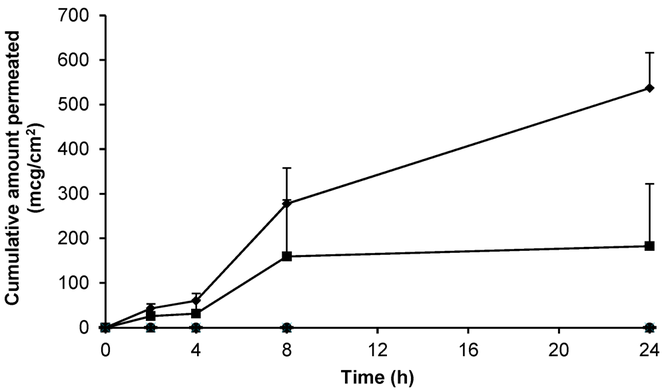- Home
- Blog
- News
- Basics
- Sources
- Agencies, Regulatory & Organisations
- CERSI Excipients Browser
- Excipient Report
- Excipient DMF List
- EXCiPACT Certified Companies
- Excipient Documentation
- Excipient EINECS Numbers
- Excipient E-Numbers
- FDA Inactive Ingredient List
- FDA GRAS Substances (SCOGS) Database
- IPEC Americas
- USP - U.S. Pharmacopeia
- Definitions
- Whitepapers / Publications
- Supplier
- Services
- Media
- Events
- 1st pharmaexcipients Poster Award
- Event Calendar
- Events featured by pharma-excipients
- 4th Annual Formulation & Drug Delivery Congress
- DDF Summit
- ExcipientFest Americas
- ExcipientFest Asia
- Global CompliancePanel
- International Conference and Exhibition on Pharmaceutics & Novel Drug Delivery Systems
- Formulation & Drug Delivery USA Congress
- Laboratory Medicine 2018
- Making Pharmaceuticals Europe
- Making Pharmaceuticals Exhibition
- Pharma Integrates
- PharmaExcipients China @CPhI China
- TTC Technology Training Center
- Jobs
- Online Sourcing
- Contact
06. September 2017
Abstract : Topical delivery of gabapentin is desirable to treat peripheral neuropathic pain conditions whilst avoiding systemic side effects. To date, reports of topical gabapentin delivery in vitro have been variable and dependent on the skin model employed, primarily involving rodent and porcine models. In this study a variety of topical gabapentin formulations were investigated, including Carbopol® hydrogels containing various permeation enhancers, and a range of proprietary bases including...
05. April 2017
Abstract Local delivery of drugs and biopharmaceuticals for the treatment of inflammatory bowel disease remains a challenge. Innovative nanomedicines with appropriate properties raise the possibility of efficient drug targeting. Hence, the overall aim of this study was to develop and characterize a protamine-based nanosystem for topical delivery of therapeutics to inflamed intestinal mucosa following oral administration. Protamine nanocapsules with a new composition were for the first time...
02. April 2017
Abstract Topical drug delivery systems provide localized drug action. A hydrophilic polymer such as polyvinyl alcohol is a multi-faceted excipient that can be used as a coating agent, lubricant, stability enhancer and viscosity-increasing agent. The objective of our study was to evaluate the use of polyvinyl alcohol polymer in preparing a topical gel with a diclofenac salt as the pharmaceutical active. The gel was characterized for its rheological and other properties and its effectiveness to...
21. March 2017
Abstract Topical route is the largest and easily accessible administration site for the different therapeutic entities. Although, physicochemical properties of drugs and biological barriers are limiting factors for getting therapeutic outcomes. Several approaches including excipients have been utilized to overcome drawbacks associated with this route. This review gives an overview of different excipient on the basis of their application in topical delivery of drugs. More
11. January 2017
Abstract Tioconazole-loaded nanocapsule suspensions and its coating with a cationic polymer were developed for nail drug delivery. The colloidal systems presented a nanometric size around 155 nm for uncoated nanoparticles and 162 nm for those with the cationic coating, with negative and positive zeta potential values, respectively. Both nanosuspensions showed drug content close to theoretical values (1 mg mL− 1), association efficiency close to 100% (HPLC) and were able to control tioconazol...
07. November 2016
Abstract Quality by design (QbD) is a scientific and risk-based approach to product development that begins at the product concept stage. This article will clarify reasonable expectations for the responsibilities of topical product formulation developers and for excipient suppliers regarding the information and samples for experiments needed for QbD. More
30. October 2016
Abstract Diclofenac topical formulations are often preferred for drug administration to patients who experience serious GIT problems. Absorption of the drug through the skin, however, can be challenging due to the natural protective feature of the stratum corneum (SC). In this article, fluid gels prepared from gellan gum were explored as a topical drug delivery vehicle. Rheological analysis of the formulations showed that it was possible to produce a topical gel with a viscosity and the...
24. October 2016
Analytics and science-based approaches are shedding more light on these complex dosage forms, promising to improve process control and product design. Ointments and creams may be as old as humanity itself, but their formulation is extremely complex. In a category of their own, these semisolids involve many more ingredients than other dosage forms, and materials in different phases, increasing the potential for variability and interactions. As a result, achieving process understanding and...
30. June 2016
Abstract In the development of transdermal and topical products it is important to understand how formulation ingredients interact with the molecular components of the upper layer of the skin, the stratum corneum (SC), and thereby influence its macroscopic barrier properties. The aim here was to investigate the effect of two commonly used excipients, transcutol and dexpanthenol, on the molecular as well as the macroscopic properties of the skin membrane. Polarization transfer solid-state NMR...
08. June 2016
Isotretinoin was formulated in novel micro emulsion based gel formulation with the aim of improving its solubility, skin tolerability, therapeutic efficacy, skin-targeting efficiency and patient compliance. Micro emulsion was formulated by the spontaneous micro emulsification method using 8 % isopropyl myristate, 24 % Labrasol, 8 % plurol oleique and 60 % water as an external phase. All plain and isotretinoin-loaded micro emulsions were clear and showed physicochemical parameters for the...

